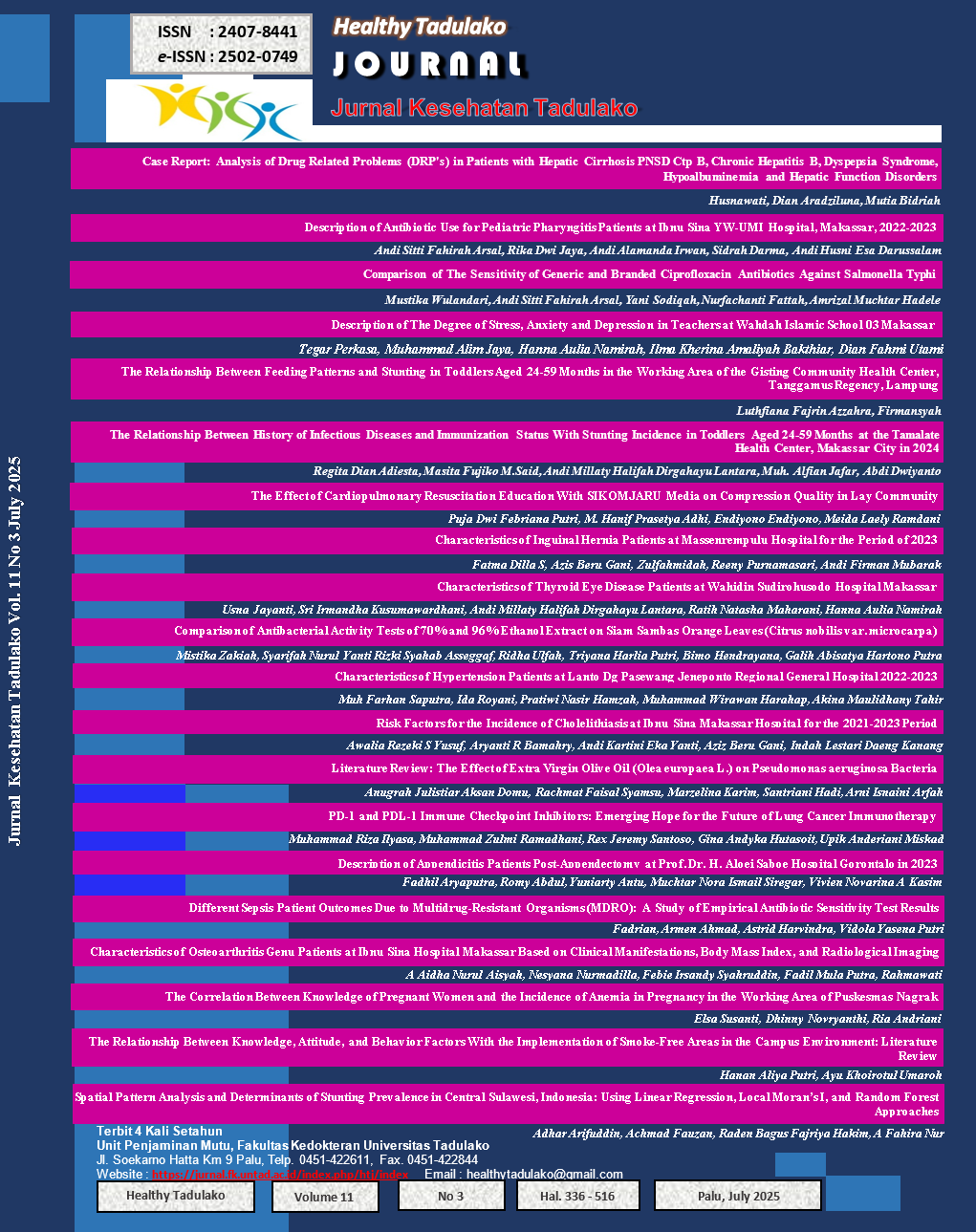Characteristics of Osteoarthritis Genu Patients at Ibnu Sina Hospital Makassar Based on Clinical Manifestations, Body Mass Index, and Radiological Imaging
DOI:
https://doi.org/10.22487/htj.v11i3.1748Abstract
Background: Knee osteoarthritis is a major cause of chronic pain and disability in the elderly. Obesity is a key risk factor, as excess body weight increases pressure on knee joints. Clinical and radiological assessments are essential to determine disease severity. Objective: To describe the characteristics of knee osteoarthritis patients at Ibnu Sina Hospital Makassar during 2023–2024 based on clinical manifestations, body mass index (BMI), and radiological imaging. Methods: A descriptive cross-sectional study was conducted using medical records of 63 patients with knee osteoarthritis. Variables analyzed included clinical manifestations, BMI, and radiological grading. Results: Of 63 patients, most (50.8%) presented with bilateral knee pain as the main complaint, while 25.4% experienced knee swelling. BMI analysis showed that the largest proportion of patients were in obesity class I (30.2%). Radiological imaging revealed that 41.3% were classified as grade II according to the Kellgren and Lawrence criteria. Conclusion: Knee osteoarthritis patients at Ibnu Sina Hospital Makassar were predominantly characterized by bilateral knee pain, obesity class I, and grade II radiological severity. Interventions such as weight management, physiotherapy, and public education on joint health are important to reduce risk and slow disease progression
Downloads
Published
How to Cite
Issue
Section
License
Copyright (c) 2025 Healthy Tadulako Journal (Jurnal Kesehatan Tadulako)

This work is licensed under a Creative Commons Attribution-NonCommercial-ShareAlike 4.0 International License.






